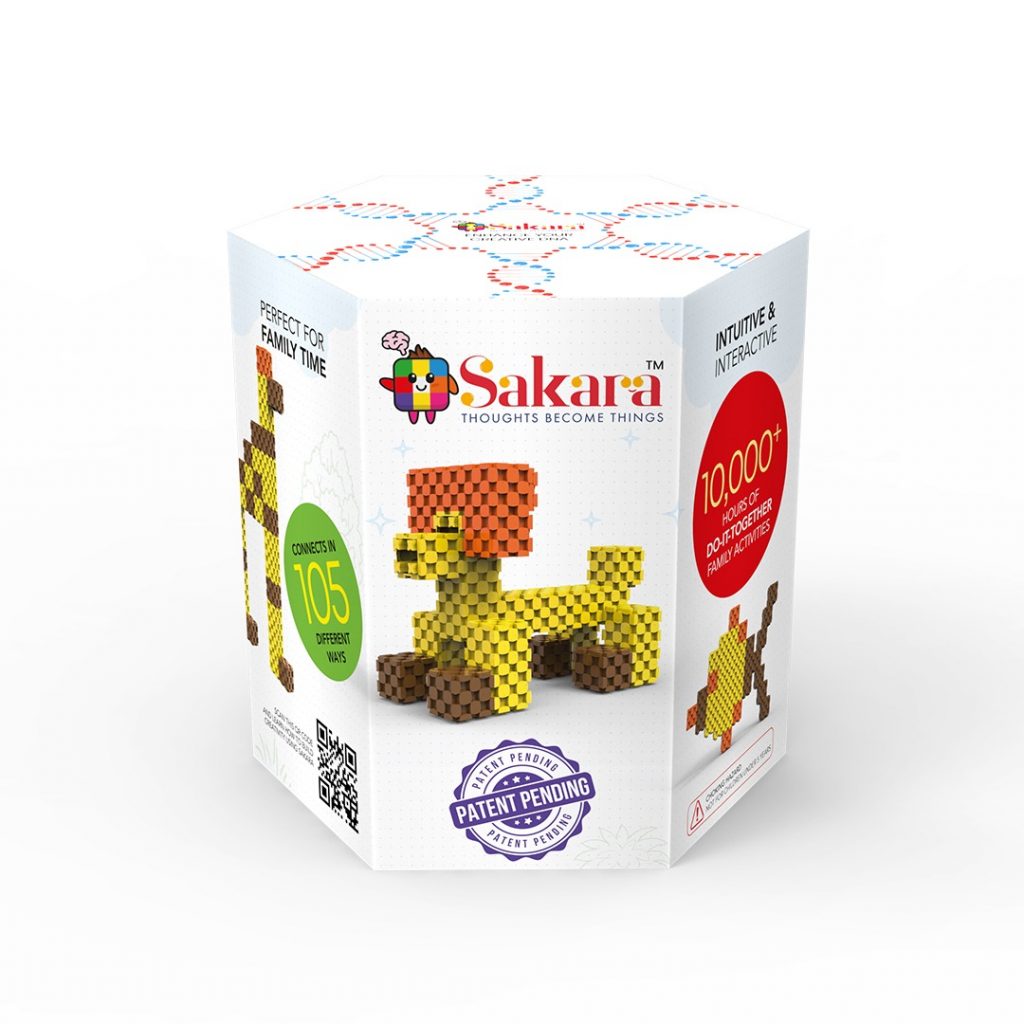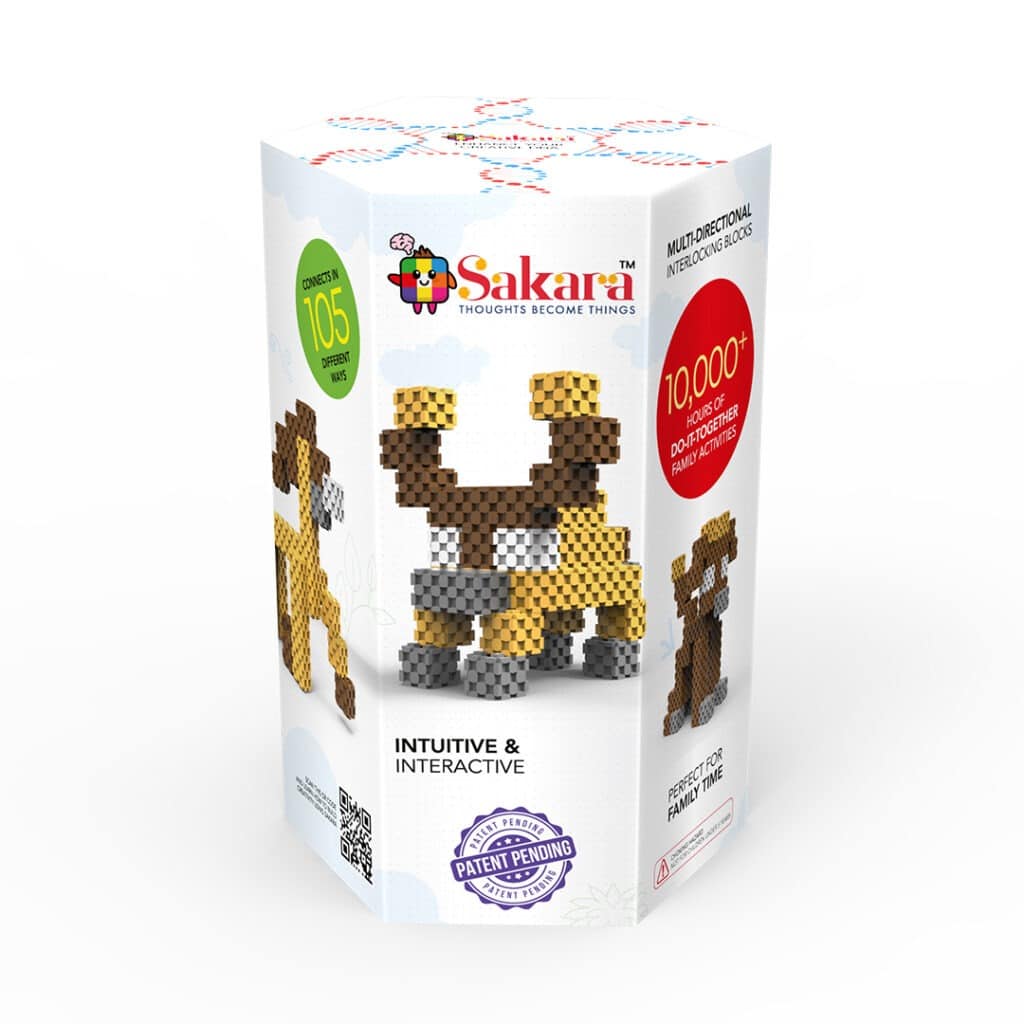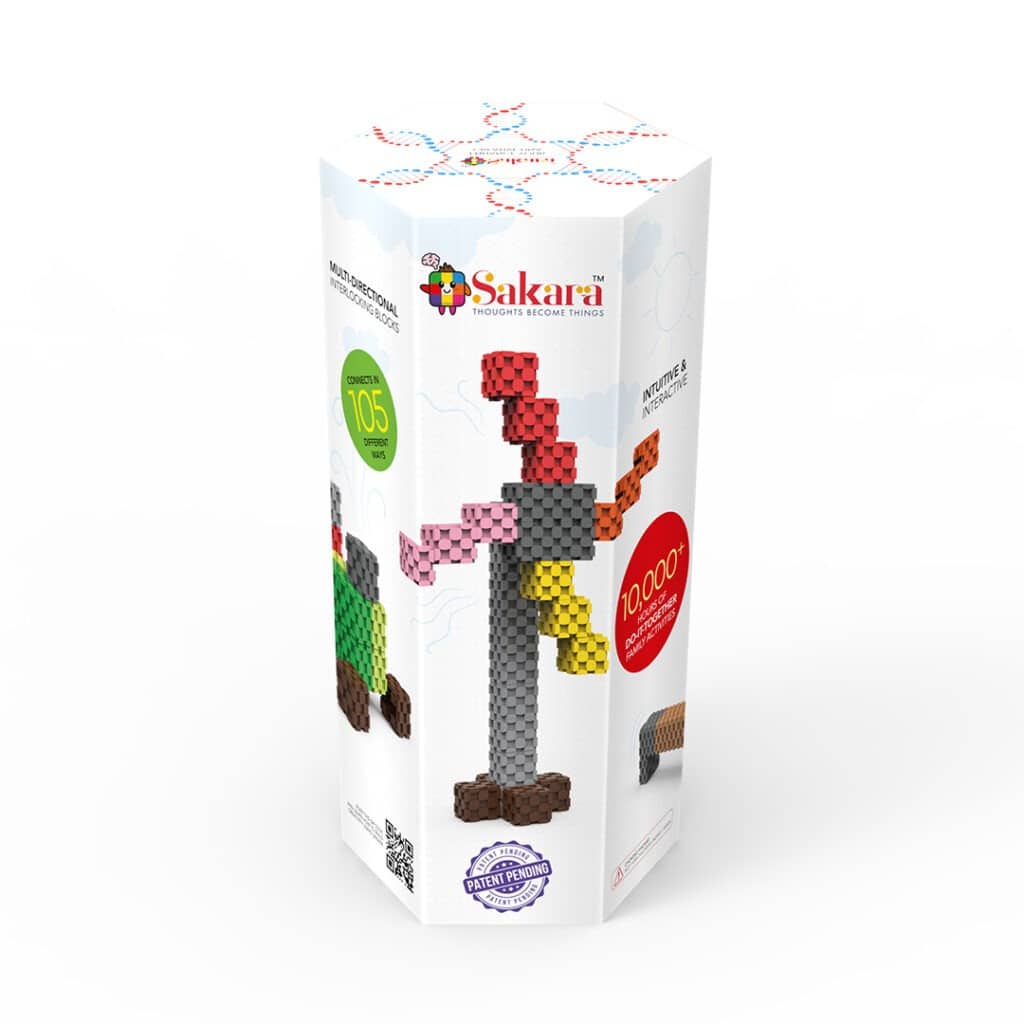Introduction
In this digital age, young children are increasingly exposed to screens through smartphones, tablets, or televisions. While technology undoubtedly offers conveniences and educational opportunities, excessive screen time can have detrimental effects on developing minds. Parents and caregivers must recognize the impact of excessive screen time and instead focus on alternative ways to engage and develop their 5-6-year-olds. One of the most effective methods for healthy development is using fine motor skill toys.
Understanding Fine Motor Skills
Fine motor skills encompass the precise movements of small muscles in the hands, fingers, and wrists. These skills are essential for activities like writing, drawing, threading beads, and using scissors. Well-developed fine motor skills are crucial for a child’s overall development, as they support their ability to perform daily tasks with independence and confidence. From tying shoelaces to manipulating buttons, fine motor skills lay the foundation for a lifetime of functional independence.
Choosing the Right Toy for Fine Motor Skill Development
Selecting the most appropriate fine motor skill toy for children requires thoughtful consideration. One should consider factors like their age, interests, and skill level. Additionally, it is crucial to choose toys that offer a variety of stimulating activities, providing an opportunity for growth and development across different areas of fine motor skill refinement. Look for toys that encourage hand-eye coordination, finger dexterity, and problem-solving abilities. An ideal fine motor skill toy should be engaging, safe, and inspire creativity. I personally recommend Sakara, the world’s first 3Dimensional Building Block Toys.
Benefits of Sakara:
- M-DIM (Multi-Directional Interlocking Mechanism)
- Builds Problem-Solving skills, Spatial Awareness, and Mathematics
- Encourages Creativity and Experimentation
- Accelerates Sensory and Motor Skills
- Perseverance and Management of Frustrations
- Managing Anxiety and Stress
- Focus and Concentration
- Color and Shape Knowledge
- Social Skills
Exploring the Benefits of Fine Motor Skill Toys
Engaging in play with fine motor skill toys has numerous benefits, enhancing various aspects of a child’s development. Perhaps the most evident one is the improvement in hand-eye coordination. Fine motor skill toys require precise hand movements that involve visual tracking and coordination. As children manipulate objects and perform various tasks, their dexterity and finger strength naturally develop, enabling them to successfully perform intricate tasks such as tying knots or holding a pencil with ease. Moreover, engaging with these toys stimulates cognitive development through problem-solving, critical thinking, and memory retention. Additionally, fine motor skill toys foster creativity and imagination, allowing children to explore their artistic abilities and think outside the box.
Top Fine Motor Skill Toy Options for 5-6-Year-Olds
When it comes to finding the best fine motor skill toys for 5-6-year-olds, a wide range of options is available. Here are three top recommendations, each offering unique features and benefits:
- Toy A: Our Safari Theme – 37-Piece Fine Motor Skills Activities Set promotes creativity and imagination and offers endless hours of entertainment. Embark on a thrilling adventure as you explore the wonders of the animal kingdom with this exciting set.

- Toy B: If you are ready to embark on an imaginative adventure with your little one, look no further than our Pets Theme 52-Pcs Building Blocks Toys! This creative playset is designed to ignite children’s imagination and foster their fine motor skills while providing endless entertainment. With vibrant colors and adorable animal designs, these building blocks will bring smiles and joy to playtime.

- Toy C: Sakara offers a playtime experience like no other. Our cubes can form 105 unique connections, presenting 11 times more opportunities than traditional blocks to transform thoughts into things. This 120-piece DIY set containing all 12 Sakara colors is one of the best fine motor skills development activity toys that blends fun and learning.

How to Maximize Engagement and Development
If you want to maximize engagement and development with fine motor skill toys, work on creating a supportive environment for play. Ensure this space is free from distractions, where children can focus and explore freely. Further, integrating fine motor skill toys into daily routines can be highly beneficial. For example, encouraging your child to assist with household tasks like buttoning their clothes or pouring water into a cup can provide opportunities for fine motor skills practice in a practical context. In addition, promoting independent exploration and problem-solving helps build confidence and autonomy in your child’s fine motor skill development journey.
Tips for Introducing Best Fine Motor Skill Toys for 5-6-Year-Olds
When introducing fine motor skill toys to 5-6-year-olds, adequate safety measures are necessary. Supervise playtime to ensure the toys are used correctly and safely. If your child shows resistance or disinterest, try incorporating the toys into a fun game or challenge, making them more appealing. Peer or sibling involvement can also enhance engagement, turning playtime into an interactive and enjoyable experience.
Addressing Concerns or Misconceptions
There are often misconceptions surrounding fine motor skill toys. Let’s see the bust of these common myths:
- Myth: Fine motor skill toys are only beneficial for children with natural creative talent.
- Reality: Fine motor skill toys benefit all children, regardless of their creative abilities. These toys promote and help cultivate essential life skills extending beyond creative or artistic expression.
- Myth: Fine motor skill toys are time-consuming and tedious.
- Reality: While some aspects of skill development may require time and practice, the overall experience of engaging with fine motor skill toys can be highly enjoyable, stimulating, and rewarding.
It is crucial to debunk these myths and understand the true value of fine motor skill toys.
The Role of Parents and Educators in Fine Motor Skill Development
Parents and educators play a vital role in supporting and nurturing a child’s fine motor skill development. Parents can actively participate by providing ample opportunities for their children to engage with fine motor skill toys and offer encouragement and praise to foster a positive learning experience. Collaboration between parents and educators is essential to reinforce learning through play. Teachers can provide guidance and suggest at-home activities to enhance fine motor skills, creating a holistic approach to development.
Measuring Progress and Setting Goals
To gauge a child’s progress in fine motor skill development, track their milestones, and set achievable goals. Improvements in activities like pencil grip, cutting skills, or buttoning clothes can indicate progress. Setting realistic goals ensures that the child can experience a sense of accomplishment and motivation as they work towards achieving these milestones.
The Future of Fine Motor Skill Toys
As the field of fine motor skill toys constantly evolves, exciting trends and innovations are on the horizon. From advanced robotic building sets to technology-integrated fine motor skill toys, the future holds great potential for further enhancing the engagement and development of children. Continued research will shed light on new approaches and opportunities for fine motor skill development.
Checklist for Tracking the Development of Fine Motor Skills (5-6 years)
Cutting:
Description: Using scissors to cut along straight lines, curves, and shapes.
Progress Indicators:
- Able to cut along straight lines accurately.
- Able to cut along curved lines with improved accuracy.
- Able to cut out basic shapes with minimal assistance.
Brushing Hair/Teeth:
Description: Holding a hairbrush or toothbrush and using proper hand movements to brush hair or teeth.
Progress Indicators:
- Capable of holding and using a brush independently.
- Demonstrates proper brushing technique with minimal assistance.
Designing/Building:
Description: Creating structures using construction toys or building blocks.
Progress Indicators:
- Builds simple structures with a variety of blocks.
- Incorporates different shapes and sizes of blocks into designs.
- Able to follow basic building instructions with minimal assistance.
Dressing:
Description: Independently putting on and removing clothing items such as shirts, pants, socks, and shoes.
Progress Indicators:
- Able to dress independently, including buttons, zippers, and snaps.
- Manages wearing socks and shoes without assistance.
Writing and Letter Formation:
Description: Manipulate a pencil or pen to write letters, words, and basic sentences.
Progress Indicators:
- Writes letters and some words with improved legibility.
- Begins to form letters with straight lines, curves, and proper proportions.
Copying Shapes:
Description: Replicating shapes or patterns using a pencil or crayon.
Progress Indicators:
- Copies basic shapes such as circles, squares, and triangles accurately.
- Begins to copy more complex shapes and patterns.
Coloring:
Description: Using crayons, colored pencils, or markers to fill in coloring pages or drawings.
Progress Indicators:
- Colors within lines with improved accuracy.
- Demonstrates awareness of using different colors to create detailed coloring.
Pencil Grip:
Description: Holding a pencil correctly using a tripod grip.
Progress Indicators:
- Holds a pencil with a tripod grip consistently.
- Demonstrates control and stability while writing or drawing.
Cut-and-Paste:
Description: Cutting out shapes or images and gluing them onto a designated area.
Progress Indicators:
- Cuts out shapes accurately and with proper safety precautions.
- Glues shape or images onto specific areas with improved precision.
Drawing:
Description: Creating original pictures or images using various drawing tools.
Progress Indicators:
- Creates recognizable pictures with greater detail and accuracy.
- Demonstrates use of different lines, shapes, and colors to enhance drawings.
Opening Containers:
Description: Using appropriate hand movements and strength to open containers, such as jars or bottles.
Progress Indicators:
- Opens containers independently, including childproof ones, with minimal difficulty.
- Demonstrates proper grip and technique for opening different types of containers.
Using Utensils:
Description: Manipulating utensils such as forks, spoons, and knives to eat independently.
Progress Indicators:
- Uses utensils to eat a variety of foods independently.
- Demonstrates improved control and coordination while using utensils.
Always keep in mind that each child develops at their own pace. It is important to observe and provide support as needed while encouraging independence and celebrating progress.
Conclusion
In conclusion, fine motor skill development plays a crucial role in the growth and independence of 5-6 year olds. By choosing the right fine motor skill toys, children can experience improved hand-eye coordination, enhanced dexterity, boosted cognitive development, and nurtured creativity. Through testimonials and success stories, the positive impact of these toys has been proven time and again.
Furthermore, it is important to address concerns and misconceptions, debunking myths that may hinder the true value of fine motor skill toys. Parents and educators, working together, can actively participate in a child’s progress by creating a supportive environment, setting realistic goals, and collaborating to reinforce learning through play. The future holds great potential with emerging trends and innovations, ensuring that the fine motor skill toy industry will continue to provide engaging and effective tools for childhood development.
FAQs
For further clarity, here are some frequently asked questions about fine motor skill toys and their relevance to 5-6-year-olds:
1. What are fine motor skills and why are they important for 5-6-year-olds?
Fine motor skills refer to the precise movements of small muscles, allowing children to perform tasks such as writing and buttoning clothes. These skills are crucial for independence and age-appropriate school-related activities.
2. How do fine motor skill toys enhance cognitive development?
Fine motor skill toys require problem-solving, critical thinking, and memory retention, all of which contribute to cognitive development and overall brain growth.
3. Can fine motor skill toys be used by children with disabilities?
Yes, many fine motor skill toys are designed to be inclusive and adaptable to various abilities. They can provide opportunities for children with disabilities to enhance their motor skills in a supportive environment.
4. How long does it typically take for children to show progress with fine motor skill toys?
The timeline for progress may vary depending on the child’s individual capabilities and the amount of practice they engage in. Consistent engagement with fine motor skill toys will facilitate noticeable improvement over time.

